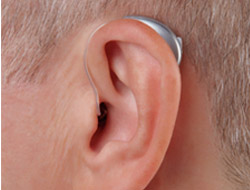WE ARE AUTHORIZED HEARING AID DEALER OF WORLD CLASS HEARING AID BRANDS
Monday-Saturday 10.00 am To 8.00 pm, Lunch Hour 1.30 am To 2.30 pm
-
auriclehearing@gmail.com -
Call Now
+ (91) - 95000 90756 -
Whatsapp Now
Click to chat
hearing aids & COCHLER IMPLANTS
HEARING AIDS
Significant advancements in technology have made most hearing aids small and relatively unnoticeable. However if cosmetics are a major concern, you must remember that the smallest hearing aids do not provide as much power as other models meaning they might not work for your level of hearing loss. Work only with a reputable clinician to determine the best hearing aid size to fit your needs, and do not feel pressured to buy the smallest device.
- Types Of Hearing Aids
- Brand
- Technology
- Price Range
- Hearing Aid Accessories
- Batteries
- Care And Maintenance
- Financing Options
Types Of Hearing Aids








Brand
- Oticon
- Signia
- Widex
- Phonak
- Resound
ANALOG VS DIGITAL TECHNOLOGY
Analog hearing aids make continuous sound waves louder. These hearing aids essentially amplify all sounds (e.g., speech and noise) in the same way. Some analog hearing aids are programmable. As the listening environment changes, hearing aid settings may be changed manually by pushing a button on the hearing aid. Analog hearing aids are becoming less and less common.
For giving you the most natural hearing experience, hearing aids are now equipped with digital technology with most advanced features. Each ones hearing is unique! Digital hearing aids allow programming to suit your hearing loss and comfort.
Digital hearing aids have all the features of analog programmable aids, but they convert sound waves into digital signals and produce an exact duplication of sound. Computer chips in digital hearing aids analyze speech and other environmental sounds. The digital hearing aids allow for more complex processing of sound during the amplification process which may improve their performance in different situations (for example, background noise and whistle reduction). They also have greater flexibility in hearing aid programming so that the sound they transmit can be matched to the needs for a specific pattern of hearing loss. Digital hearing aids also provide multiple program memories. Most individuals who seek hearing help are offered a choice of only digital technology these days.
Not only loudness, hearing aids help us to understand speech better also in presence of background noise with the help of different features eg:directional microphones and automaticity.
PRICE RANGE
The best hearing aid price does not mean the best offer. It means the service and maintenance afterwards and service from a most knowledgeable professional. One of the benefits of purchasing from a professional clinician is the troubleshooting and maintenance are handled well.
Based on the technology the price range of the hearing aids vary from several thousands to lakhs. The technology chosen depends upon your hearing needs and life style. We suggest the below recommendations for different lifestyle.
FINANCING OPTIONS
We Accept Credit Cards, Debit Cards UPI And Cheques For The Purchase Of Hearing Aids. EMI Option Also Will Be Provided.
USE KOTAK/SBI CREDIT CARD/DEBIT CARD GET 3% CASH BACK OFFER ON HEARING AID PURCHASES(conditions apply)

HEARING AID & COCHLEAR IMPLANT ACCESSORIES


HOW HEARING IS TESTED IN CHILDREN
Kids who have hearing loss can have trouble in hearing or understanding some or all sounds. This can happen when there is a problem with:
. One or more parts of the ears
. The nerves that send sound signals from the ears to the brain
. The part of the brain that makes sense of these signals
Auricle Hearing Care is dedicated to provide the best professional service in the field of audiology and speech language pathology. We offer full range of audiological testing (hearing checkups) and management, as well as speech and language intervention for all age groups. Our mission is to provide complete rehabilitation services, such as hearing aids, assistive listening devices, ear protective devices and hearing accessories for people with hearing difficulties. Our professionals will help you in assessing and understanding your hearing problems and make you hear better with the help of advanced technologies. We believe in client satisfaction by providing most innovative technologies at reasonable prices. Please feel free to consult our experts .
ASSISSTIVE LISTENING DEVICES
Personal listening systems /assistive listening devices that allow you to tune in to what you want to hear and mute other sounds along with your hearing aids. Especially helps in attending in class room environments and group meetings.
WHAT TYPES OF ALDS ARE THERE?
FM SYSTEM One type of ALD is an FM transmitter/receiver combination. In this set-up the speaker may wear an FM transmitter on her clothing, and then the wireless FM signal is sent to anyone in the room wearing an FM receiver. When noise levels increase, students with hearing loss or attention issues often struggle to differentiate important speech sounds – such as the teacher’s voice – from the surrounding noise. In these situations FM technology is a real plus, as it helps students better hear and respond to the teacher’s directions, improving their performance as a result.
INFRARED technology uses the same concept as with an FM system. The signal is passed from an infrared transmitter that uses pulses of light to transmit the sound, and it can be received by a person wearing an infrared receiver.
INDUCTIVE LOOP Inductive Loop An inductive loop system is a system that uses an electromagnetic field to amplify the sound of the speaker, and then sends that sound to anyone wearing an inductive loop receiver.
BATTERIES
Hearing aids use zinc air batteries to draw the power. Based on style of hearing aid, the size of battery and life of the battery varies. The life of battery varies from 1 week to 1 month based on size, usage and power consumption.
EAR MOLDS
An ear mold is a piece of plastic or other soft material moulded to precisely fit in the ea and to deliver the sound from a behind the ear hearing aid. Earmolds are anatomically shaped and can be produced in different sizes and in hard or soft material. It improves sound transmission to eardrums , diminish feedback paths in hearing aids and assure better intelligibility in noisy-environment communication. The main goal in wearing earmolds is to attain better user comfort and efficiency. Earmolds (and their tubes) often turn yellow and stiff with age, and thus need replacement on a regular basis.
EAR PROTECTIVE DEVICES
Hearing protection devices decrease the intensity of sound that reaches the eardrum. They come in two forms
DEHUMIDIFIER (DRY KITS)
De humidifiers are used to absorb the moisture from the hearing aids. Most often it contains silica granules which absorb the moisture. With the use of dry kits, life of hearing aids will be extended, less repairs, Better sound quality, Longer battery life and Fresh and clean hearing devices
CLEANING TOOLS
An cleaning kit is a handy tool designed for safe and effective ear hygiene. Typically consisting of soft silicone or plastic tips and a gentle suction mechanism, these kits help remove excess earwax and debris without the risk of damaging the eardrum. Users can easily control the suction strength, making it suitable for all ages. The kit provides a non-intrusive, comfortable way to maintain ear cleanliness, promoting better hearing and overall ear health. Always follow the instructions carefully to ensure safe usage and consult a healthcare professional if you have any concerns about your ear health.
EAR CARE AND MAINTENANCE
EAR CARE TIPS




